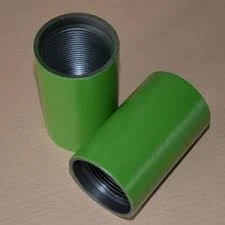- Afrikaans
- Albanian
- Amharic
- Arabic
- Armenian
- Azerbaijani
- Basque
- Belarusian
- Bengali
- Bosnian
- Bulgarian
- Catalan
- Cebuano
- Corsican
- Croatian
- Czech
- Danish
- Dutch
- English
- Esperanto
- Estonian
- Finnish
- French
- Frisian
- Galician
- Georgian
- German
- Greek
- Gujarati
- Haitian Creole
- hausa
- hawaiian
- Hebrew
- Hindi
- Miao
- Hungarian
- Icelandic
- igbo
- Indonesian
- irish
- Italian
- Japanese
- Javanese
- Kannada
- kazakh
- Khmer
- Rwandese
- Korean
- Kurdish
- Kyrgyz
- Lao
- Latin
- Latvian
- Lithuanian
- Luxembourgish
- Macedonian
- Malgashi
- Malay
- Malayalam
- Maltese
- Maori
- Marathi
- Mongolian
- Myanmar
- Nepali
- Norwegian
- Norwegian
- Occitan
- Pashto
- Persian
- Polish
- Portuguese
- Punjabi
- Romanian
- Russian
- Samoan
- Scottish Gaelic
- Serbian
- Sesotho
- Shona
- Sindhi
- Sinhala
- Slovak
- Slovenian
- Somali
- Spanish
- Sundanese
- Swahili
- Swedish
- Tagalog
- Tajik
- Tamil
- Tatar
- Telugu
- Thai
- Turkish
- Turkmen
- Ukrainian
- Urdu
- Uighur
- Uzbek
- Vietnamese
- Welsh
- Bantu
- Yiddish
- Yoruba
- Zulu
coupling stainless steel fitting
Understanding Coupling Stainless Steel Fittings A Comprehensive Overview
When it comes to plumbing, industrial applications, or the construction of mechanical systems, the importance of reliable coupling fittings cannot be overstated. Among the various materials utilized for these fittings, stainless steel has emerged as a preferred choice due to its unique properties, durability, and versatility.
What are Coupling Stainless Steel Fittings?
Coupling fittings are devices that connect two sections of pipe or tubing, allowing for the seamless transmission of fluids or gases. Stainless steel coupling fittings are manufactured from alloys that contain at least 10.5% chromium, which provides a protective layer against corrosion. This characteristic is especially beneficial in applications that involve water, steam, or even corrosive chemicals.
Types of Stainless Steel Coupling Fittings
1. Threaded Couplings These fittings typically feature male threads on one end and female threads on the other. They are easy to install and allow for a secure connection; however, they are not suitable for high-pressure applications due to potential leak points.
2. Socket Weld Couplings These are designed to be welded into place. The pipe is inserted into the coupling and welded around the joint. This type of fitting offers a strong, leak-proof connection ideal for high-pressure environments.
3. Butt Weld Couplings These fittings are used for joining pipe ends by welding them at their ends. This method is common in systems that require maximum strength and durability, such as pipelines in oil and gas industries.
4. Compression Couplings These fittings are designed for quick installation. By compressing a ring around the pipe, they create a tight seal without the need for welding. They are versatile and often used in residential plumbing systems.
Advantages of Stainless Steel Coupling Fittings
coupling stainless steel fitting

2. Durability Stainless steel fittings offer exceptional strength and can withstand high pressure and temperature variations. This durability ensures a long service life, reducing the need for frequent replacements.
3. Hygienic Properties Stainless steel fittings are non-porous and can be easily cleaned. This makes them suitable for food processing and pharmaceutical applications, where hygiene is paramount.
4. Versatility Stainless steel coupling fittings are compatible with a wide range of pipe sizes and types, making them suitable for various applications across different industries.
5. Aesthetic Appeal The sleek, shiny appearance of stainless steel can enhance the overall look of installations, particularly in visible plumbing applications.
Applications of Coupling Stainless Steel Fittings
Stainless steel coupling fittings are used across numerous sectors. Some notable applications include
- Water Systems In municipal water supplies or irrigation systems where water quality is essential. - Chemical Processing For piping systems that transport aggressive chemicals where corrosion resistance is critical. - Food and Beverage Industry Ensuring hygiene and safety while transporting food products. - Construction and Manufacturing In structural applications where strength and durability are paramount.
Conclusion
In summary, coupling stainless steel fittings are a vital component in various industries and applications. Their unique properties, including corrosion resistance, durability, and hygienic nature, make them the preferred choice for professionals looking for reliability and longevity in their piping systems. When selecting the appropriate coupling fitting, it is essential to consider the specific requirements of the application, such as pressure tolerance, chemical compatibility, and installation method. By making informed decisions, engineers and contractors can ensure the integrity and efficiency of their systems for years to come.
-
Tubing Pup Joints: Essential Components for Oil and Gas OperationsNewsJul.10,2025
-
Pup Joints: Essential Components for Reliable Drilling OperationsNewsJul.10,2025
-
Pipe Couplings: Connecting Your World EfficientlyNewsJul.10,2025
-
Mastering Oilfield Operations with Quality Tubing and CasingNewsJul.10,2025
-
High-Quality Casing Couplings for Every NeedNewsJul.10,2025
-
Boost Your Drilling Efficiency with Premium Crossover Tools & Seating NipplesNewsJul.10,2025







